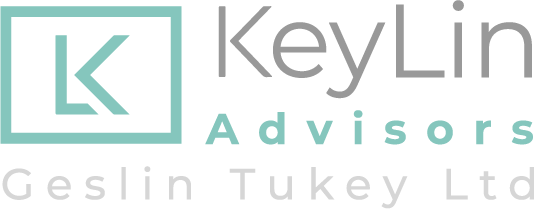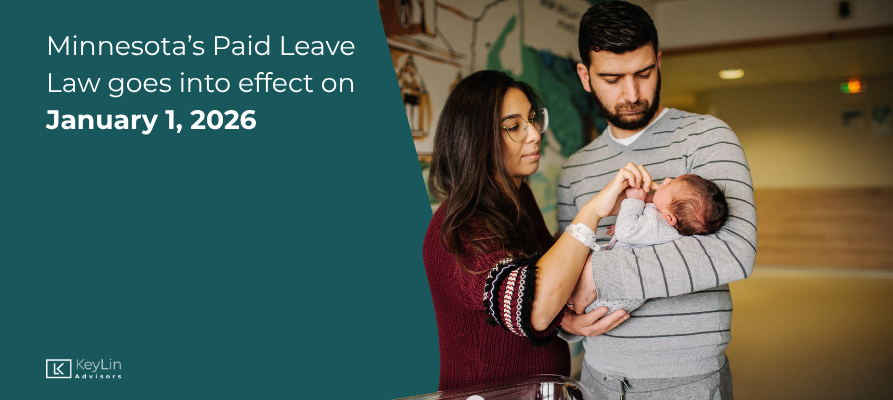Minnesota Paid Leave: A Complete Guide for Employers (2026)
In May 2023, Minnesota passed the Paid Leave Law (PLL). While the law doesn't go into effect until January 1, 2026, it's crucial for employers to understand these changes now. This legislation covers Minnesota's paid family and medical leave under one comprehensive system.
For employers, this represents one of the most significant employment law changes in recent memory. Whether you're managing a small business or overseeing a larger workforce, understanding Minnesota paid family leave 2026 and the broader paid leave requirements isn't just about avoiding penalties—it's about positioning your business for success in Minnesota's evolving employment landscape.
The reality? This law affects virtually every employer in Minnesota, regardless of size. From payroll changes to new compliance requirements, the time to prepare is now.
Understanding Minnesota’s Paid Leave
Minnesota paid leave operates as a state-run insurance program similar to unemployment insurance. Under Minnesota's Paid Leave Law (PLL), which goes into effect in January 2026, employers must provide covered employees with up to 20 weeks of leave to care for themselves and their family members with paid leave benefits available through the Minnesota Paid Leave Program.
Two Comprehensive Categories of Paid Leave in Minnesota
The Minnesota paid family leave 2026 program breaks benefits into two main categories that cover a wide range of situations:
Medical Leave: When your own serious health condition prevents you from working, including:
Pregnancy and recovery from childbirth
Mental or physical illness requiring treatment
Preventive medical care
Recovery from injuries
Family Leave: A comprehensive category that encompasses four distinct types of Minnesota paid family leave:
Parental Leave (Minnesota paid parental leave): Bonding with new children through birth, adoption, or foster care placement
Caregiving Leave: Caring for family members with serious health conditions, including spouses, domestic partners, children, parents, siblings, grandparents, and grandchildren
Safety Leave: Time off when employees or their family members experience domestic violence, sexual assault, or stalking
Deployment-Related Leave: Military qualifying exigency leave for families dealing with active duty deployment of a family member
Understand Leave Categories and Time Limits
Two Main Benefit Categories:
Medical Leave: Up to 12 weeks per benefit year for personal health conditions
Family Leave: Up to 12 weeks per benefit year for all family-related leave (parental, caregiving, safety, and deployment combined)
Maximum Total: 20 weeks of paid leave in Minnesota per benefit year when using both categories
Important timing considerations:
Parental leave (part of Minnesota paid parental leave) must be used within 12 months of the child's arrival
Intermittent leave is available for ongoing medical treatment or caregiving needs
Emergencies, like safety leave, can begin immediately when qualifying events occur
Leave can be taken consecutively or intermittently, depending on the situation
Who is Covered Under Minnesota Paid Leave?
Unlike the federal Family and Medical Leave Act (FMLA), paid leave in Minnesota covers:
All employers, regardless of size
Full-time, part-time, and most seasonal workers
Both private sector and government employees
Nonprofit organizations and religious organizations
Self-employed individuals may voluntarily participate in the program by opting in
To be eligible, workers will need to have earned at least 5.3% of the state average annual wage in total over the base period—a designated 12-month period prior to the start of leave. Based on the current state average annual wage, workers would need to have earned about $3,700 in the base period to qualify.
Key Advantages Over Federal FMLA
While FMLA provides unpaid leave only for larger employers, Minnesota paid family leave 2026 and the broader paid leave program offer:
Partial wage replacement ranging from 55% to 90% of wages
No employer size restrictions - coverage regardless of company size
Lower eligibility thresholds than federal requirements
Broader qualifying conditions and family relationships
Benefits are portable, meaning that income earned across all covered Minnesota employers in the base period counts toward the total. This means employees who change jobs can maintain their eligibility for paid leave in Minnesota.
The Financial Reality: What Minnesota Paid Leave Costs
Premium Rate Structure for 2026
Minnesota Paid Leave confirmed that when the program begins in 2026, the premium rate will be 0.88% of taxable wages. This rate funds both components of the program:
0.61% for medical leave benefits
0.27% for family leave benefits (including Minnesota paid parental leave)
Total: 0.88% of taxable wages (up to Social Security wage base)
How Employers Share Costs
Employers must pay at least 50% of the total premium and can deduct the remainder from employee pay. Employers may choose to pay up to 100% of the premium.
Example calculation: For an employee earning $50,000 annually:
Total premium: $440 (0.88% × $50,000)
Minimum employer cost: $220 (50%)
Maximum employee deduction: $220 (50%)
Small Business Relief and Support
Minnesota’s paid leave program includes financial relief for small employers:
Reduced premium rate: Employers with 30 or fewer employees and an average wage at or below 150% of the statewide average automatically qualify for a reduced premium, only 75% of the standard rate. No action is required to receive this discount since the DEED applies it based on quarterly wage reporting.
Critical Compliance Deadlines for Minnesota Paid Leave
December 1, 2025: Starting December 1, 2025, employers must post notice of employees' rights under the PLL in the workplace. MN DEED will provide standardized notice materials.
January 1, 2026: Minnesota paid leave program launches
Premium deductions begin for both Minnesota paid family leave and medical leave
Employees can start taking paid leave in Minnesota
Benefit applications become available
April 30, 2026: The first premium payments for Paid Leave are due. The first premiums will be based on wage details reported between January 1, 2026, and March 31, 2026.
Ongoing Administrative Requirements
Quarterly responsibilities:
Submitting wage detail reports (similar to unemployment insurance process)
Paying premium contributions to fund paid leave in Minnesota
Maintaining accurate records for both medical and Minnesota paid family leave usage
Employee communication requirements:
Providing written information about all five types of Minnesota paid leave benefits within 30 days of hire (including premium deduction amounts on earnings statements)
Updating employee handbooks with comprehensive leave policies covering medical, parental, caregiving, safety, and deployment leave
Ensuring employees understand the distinction between medical leave and the four types of Minnesota paid family leave
Penalties: The Cost of Non-Compliance
Notice and Communication Violations
Failure to comply with notice requirements may result in escalating penalties:
Initial violations: $50 per employee
Subsequent violations: $300 per employee
Retaliation and Interference Penalties
Employers are strictly prohibited from retaliating against employees for:
Requesting information about any type of Minnesota paid family leave (parental, caregiving, safety, deployment) or medical leave
Filing applications for paid leave in Minnesota under any of the five categories
Taking approved leave for medical, parental, caregiving, safety, or deployment reasons
Exercising any rights under the Paid Leave Law
Seeking accommodations related to any qualifying leave situation
Violation consequences: The DEED commissioner may impose penalties ranging from $1,000 to $10,000 per violation.
Comprehensive Employer Liability
Employers found violating Minnesota paid leave laws face:
Compensatory damages to affected employees
Interest on unpaid amounts
Liquidated damages equal to the sum of damages and interest (unless employer can prove good faith)
Injunctive relief, including potential reinstatement and promotion requirements
Attorney fees and court costs in some cases
Planning for 2026 Launch
With less than a year until Minnesota's paid family leave 2026 launches, now is the time to start preparing your business for these significant changes.
Configure payroll and HRIS systems for premium deductions and comprehensive reporting across all leave types
Establish leave administration procedures for medical leave and all four types of Minnesota paid family leave (parental, caregiving, safety, deployment)
Create detailed employee education programs covering all five aspects of paid leave in Minnesota
Budget for program costs, including premiums and potential temporary staffing for various leave scenarios
Develop coordination protocols with MN DEED for benefit administration across all leave categories
Plan workforce coverage strategies for extended leave periods, considering the unique needs of parental, caregiving, safety, and deployment situations
Remember that Minnesota paid family leave 2026 is just one part of Minnesota's evolving employment law landscape. Minnesota's Earned Sick and Safe Time Law also requires employer compliance, and understanding how these programs work together is crucial for comprehensive leave management.
How KeyLin Advisors Help
Navigating paid leave in Minnesota requirements involves complex interactions between employment law, payroll administration, and benefits management. As your trusted accounting partner, KeyLin Advisors understands that these employment law changes can significantly impact your business operations and financial planning.
Ready to prepare your business for Minnesota's new paid leave requirements? Contact KeyLin Advisors today to discuss how we can help you navigate these changes successfully. Together, we can make sure your business is ready for 2026 and beyond.



